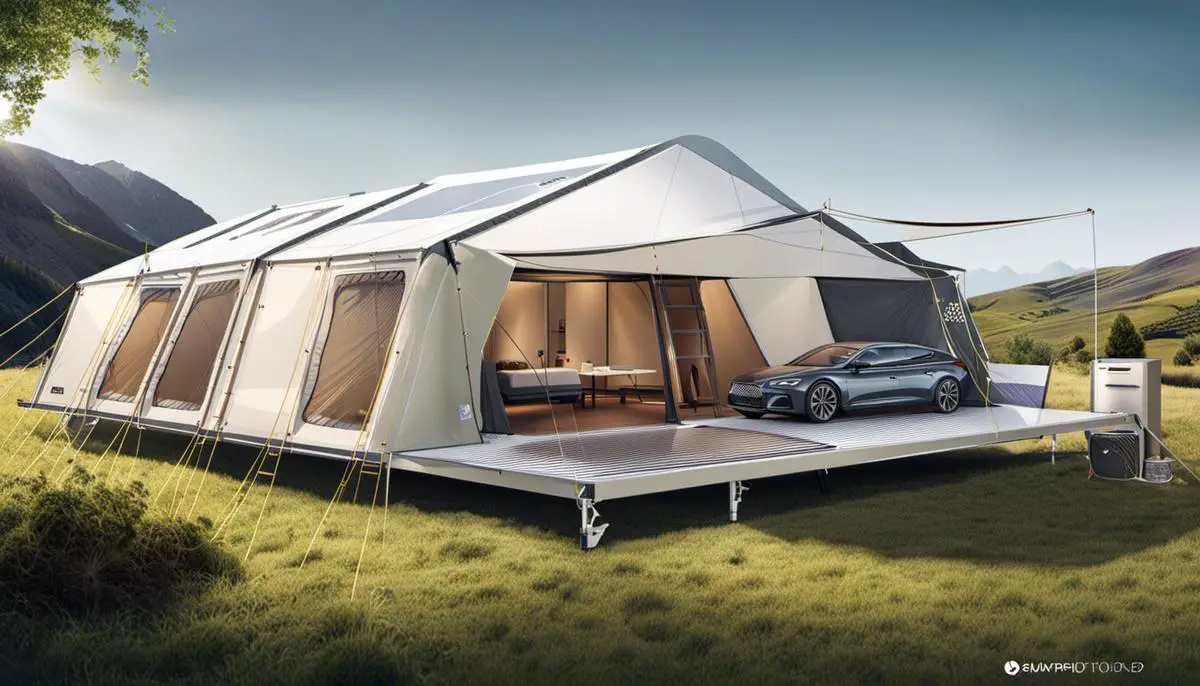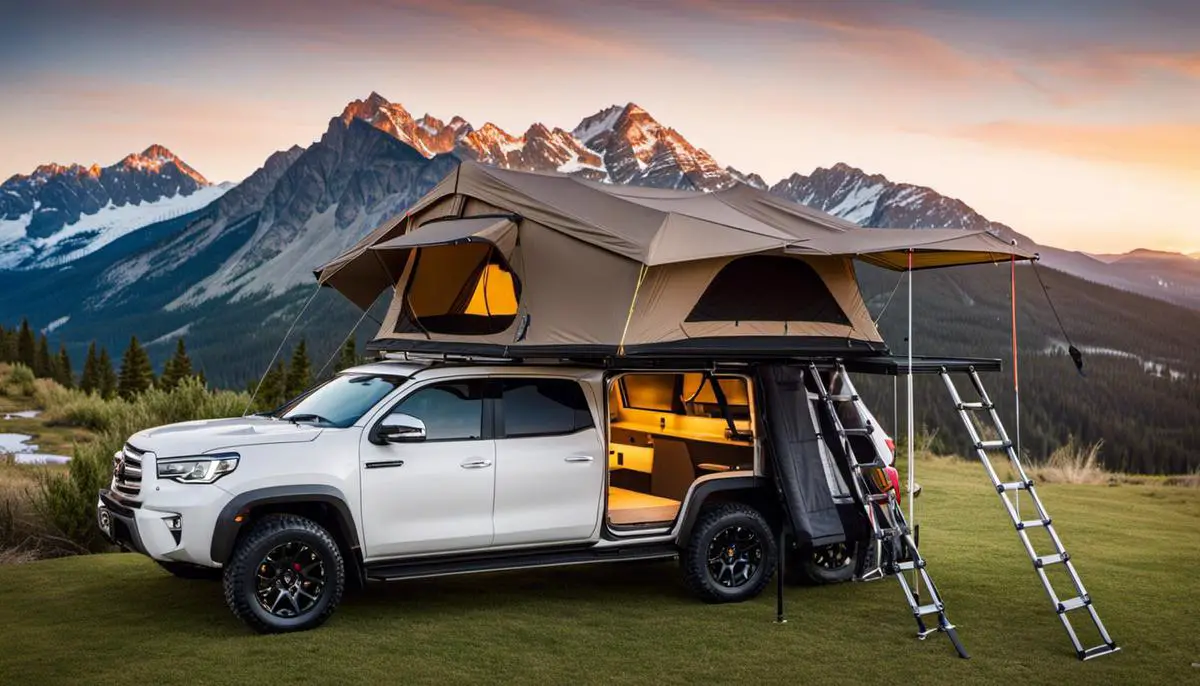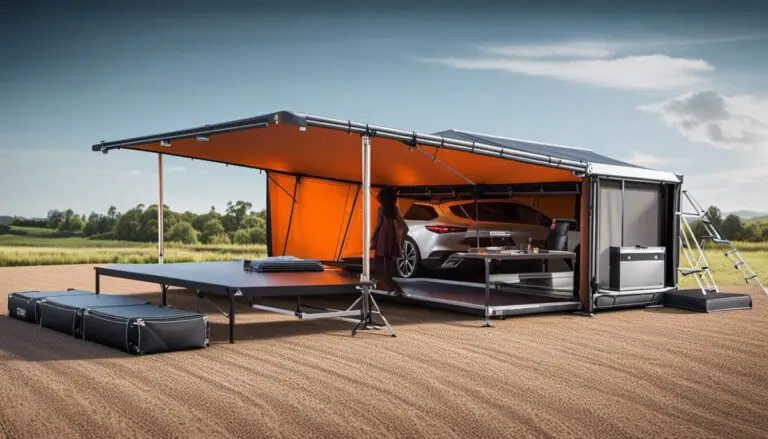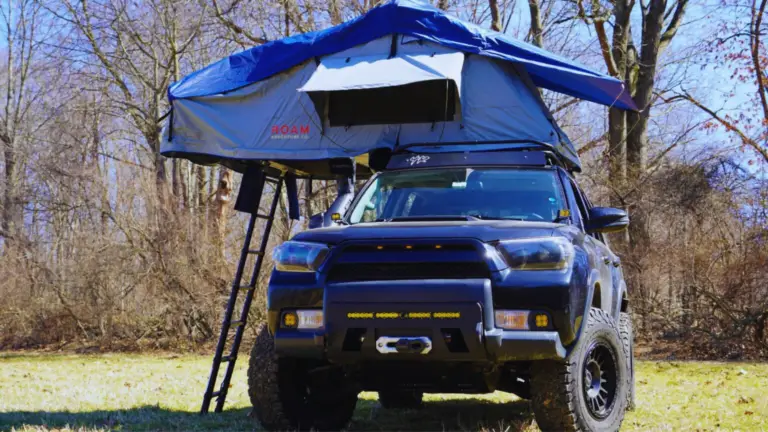Why are rooftop tents so expensive? We break down the cost of materials, assembly, and shipping to help you understand the true cost of a RTT.
Although initially unassuming, rooftop tents carry a price tag that often leaves potential buyers questioning their value. In an era where outdoor activities are steadily rising into mainstream lifestyle choices, these tents have concurrently grown in popularity, becoming a sought-after addition to many camping expeditions. With their price tag seemingly disproportionate to their size, it is crucial to delve deeper into the intricacies of their manufacturing process, the brand’s market positioning, the unique features they offer, and the overall market demand. By evaluating these key factors, one gets to better understand the real value and the truth behind the seemingly high price of rooftop tents.
Details of Manufacturing and Material
The Manufacturing Process of Rooftop Tents
Rooftop tents are manufactured using a complex process that involves numerous stages of production. This process begins with the design and prototyping stage, where the concept of the tent is developed and initial models are created. Manufacturers spend a considerable amount of money during this stage in testing; ensuring they have the right design that balances comfort, weight, aesthetic, and durability.
Once the design and prototype are successfully completed and tested, the manufacturing process can begin. This involves the fabric cutting, sewing, assembly, quality control, and packaging. Each stage requires skilled professionals to ensure a high-quality end product. For example, rods must be cut and sewn with precision, seams sealed correctly and tent bodies attached to bases without faults and inconsistencies.
Materials Used in Rooftop Tents
A substantial proportion of the cost of rooftop tents is accountable to the price of materials used. Rooftop tents are constructed from high-quality, durable materials that are designed to withstand harsh weather conditions. These materials include marine-grade stainless steel for the frame, and high-density foam mattresses for comfort.
The outer shell of the tent is typically made from sustainable, waterproof, and UV-resistant fabric such as rip-stop canvas or polyester. Some manufacturers also add an extra layer of rainfly for added protection against rain or snow.
The platform or base of the rooftop tent is generally made from a hard, sturdy material like aluminum or fiberglass. These materials are lightweight yet strong enough to support the weight of the tent and its occupants.
In addition, the necessary mounting hardware and ladders that come with the rooftop tents are also made from high-quality, durable materials, and all these contribute to the overall cost of the tents.
Why are Rooftop Tents High-Priced? A Manufacturer’s Understandings
Viewing it from a manufacturer’s standpoint reveals that the pricing of rooftop tents is based on the expense of raw materials, labor involved in production, and the convenience it adds to camping experiences.
The cost of designing and producing a product that can resist harsh weather, offer cozy outdoor sleeping quarters and remains user-friendly calls for a significant outlay. Other factors that drive the cost include research and development expenses, inventory and delivery costs, marketing efforts, customer care, and post-sale services.
To sum up, the steeper cost of rooftop tents owes its origin to the expenses involved in their design, using premium grade materials, and the effort put into the production. These tents are designed to offer a comfortable, dependable, hard-wearing outdoor living solution, and their pricing reflects this.

Brand and Market Position
The Role of Brand Reputation in the Cost of Rooftop Tents
The cost of rooftop tents also greatly hinges on the recognition and status of the brand. Popular brands like Thule or Yakima, for instance, charge a premium for their rooftop tents. The historic reliability and superior quality these brands have consistently delivered over the years justifies this cost to many consumers. Most customers are willing to pay the additional cost for the added peace of mind that comes with buying from a reputable and trusted brand.
The Impact of Brand Loyalty and Prestige
Brand loyalty also plays a critical role in the pricing of rooftop tents. For outdoor enthusiasts and frequent campers, the trust and familiarity they have with certain brands make them more inclined to pay a premium for their products, including rooftop tents. They perceive these tents as reliable, durable, and worth the cost. Ultimately, it becomes a cycle where brand loyalty leads to higher prices, and the premium pricing further strengthens the image of the brand.
Specific Attributes and Quality Targets
The quality targets set by these brands contribute to the final cost of the rooftop tents. Higher-end tents come equipped with specific attributes, features, and materials that enhance their durability, stability, and ease of use. Usually, these tents are made to withstand various weather conditions and are equipped with high-quality components, such as durable fabrics, sturdy ladders, and reliable mounting systems. The cost of producing these premium tents naturally drives up their retail price.
The Market Position and Pricing
The outdoor equipment market generally is one that thrives on innovation, quality, and brand reputation. Brands that are positioned higher in the market often have a significant following of loyal customers willing to pay higher prices for the perceived quality and reliability of their rooftop tents. Although the price tag might seem steep at first glance, many consumers believe that the benefits such as comfort, durability, and ease of use that come with high-quality rooftop tents justify the cost.
From Production Cost to Retail Price
Another element that influences the high price tag of rooftop tents is the production cost. These tents are not simple products to manufacture; they require engineering expertise, quality materials, and intricate manufacturing processes. Therefore, the cost of production significantly influences the final retail price. This includes factors like the cost of raw materials, labor costs, as well as research and development expenses that companies incur in their quest to create innovative, durable and reliable rooftop tents.
The significant price tag that often accompanies rooftop tents is dictated by several intertwining factors, such as the reputation of the brand, their market standing, the unique features of their products, and the associated production costs. Despite the loftiness of these prices, they are justified by the true value the tents offer in terms of comfort and the distinctive camping experience that they enable for outdoor enthusiasts.

Features and Unique Offerings
Understanding the Value of Rooftop Tents
Mounted on the roof of a vehicle, a rooftop tent is not just a tent, but rather an ingenious solution to camping that assures convenience, security, and comfort, thus justifying its price tag. Unlike conventional ground tents, rooftop tents pack in a host of unique features, which largely contribute to their high cost.
These tents are continuously redesigned and improved to adapt to new technological advancements and feedback from users. They boast specialty attributes such as wind resistance, waterproof nature, anti-condensation, more headroom, and a sleeping experience that’s quite literally a notch above, i.e., elevated!
Extreme Durability and Convenience
Traditional camping tents require a lot of time and energy to set up. They are also exposed to many risks on the ground such as insects, animals, and water leakage. On the contrary, roof tents offer an easy and practical solution. Being affixed atop a vehicle, it offers campers the convenience to camp anywhere their vehicle can go, providing a safer sleeping environment above the ground.
The design of rooftop tents is meant to endure various weather conditions while ensuring uncompromised comfort. Most rooftop tents are crafted from heavy-duty, weather-resistant materials. The hard shells are typically made from reinforced fiberglass or lightweight aluminum while the tents themselves consist of durable, rip-stop fabric often coated for extra water resistance.
Resilience to wind, snow, and rain are imperative and significantly drive up the cost as compared to regular camping tents. Elevated durability ensures that your tent withstands the test of time, harsh weather, and rough terrains. This is especially pivotal for avid campers who frequent varied environments and weather conditions.
Space, Privacy and Extra Accessories
Rooftop tents offer more space and privacy. This additional square footage maximizes comfort and the experience of being out in nature. Some rooftop tents include annex rooms, adding even more habitable space for campers or an area to store gear out of the weather.
Additionally, many come equipped with added accessories like built-in mattress pads, telescoping ladders, and storage pockets, adding to their functionality and convenience levels. Others include solar-powered ventilation systems or sky-view windows for star-gazing, completely revolutionizing the camping experience.
All of these enhancements contribute to the rooftop tent as a unique product. The result is a considerable price difference compared to traditional tenting options.
Investing in Innovation, Safety, and Compliance
The development of new and advanced products typically requires significant funding. A chunk of the cost of rooftop tents is channeled towards research and development in an effort to present consumers with the most innovative and efficient designs.
These tents, typically positioned on moving vehicles, have to abide by a range of safety standards and regulations, further adding to their high price. Enhancements and upgrades such as fortified mounting systems, safe design elements for entering and exiting, as well as high-security locking mechanisms additionally contribute to the inflated price tag.
In essence, the elevated cost of rooftop tents can be accounted for by the unique blend of comfort, convenience, resilience, and special features these products offer. While it may seem a hefty expenditure at first glance, frequent campers often regard the investment as worthwhile due to the quality, flexibility, and sophistication of the product they receive.

Market Demand and Profit Margin
Upsurge in Demand and Affluent Consumers
The advent of rooftop tents, otherwise known as vehicle rooftop tents or car tents, has seen a sharp increase in demand among the well-off adventure-seeking and travel enthusiast communities. These individuals are usually willing to shell out high prices for premium convenience and luxury in their outdoor adventures. As a result, this surge in demand for high-end products enables suppliers and manufacturers to elevate their pricing without experiencing a drastic effect on their sales.
Supply and Demand Dynamics
Economics principles dictate that a high demand for a product with limited supply drives prices up. Manufacturers of rooftop tents often have to navigate several logistical complexities to produce and distribute these products, which further limits the number of rooftop tents available in the market at any given moment. This creates a classic supply challenge, causing prices to escalate as consumers compete for the available products.
Material and Production Costs
Rooftop tents, unlike ordinary tents, are made from durable, high-quality materials that withstand different weather conditions, offering comfort similar to that of a traditional home. The high quality of materials justifies the higher price point, as rooftop tents provide a level of comfort and convenience that traditional camping tents often do not. The manufacturing processes are also more complex and sophisticated, involving innovative technology and skilled craftsmanship, which contributes to the high production costs that are reflected in the retail price.
High Profit Margins and Retailers
Retailers are in the business of making a profit, and luxury products like rooftop tents typically come with high profit margins. The high retail prices are not just a reflection of the production costs but also include a significant markup that serves as the retailer’s profit. This markup is often much larger for rooftop tents compared to more commonly sold items, factoring into the end price consumers are charged. Having a small number of competing products in the market gives retailers the liberty to maintain high profit margins without compromising on their sales volume.
Unique Features and Add-ons
Most rooftop tents also come with unique features that set them apart from regular camping tents, such as built-in mattresses, ladder, windows, and ventilation enhancements. Some models also offer add-ons like annex rooms and awnings for an even more luxurious camping experience. These features and add-ons make a significant impact on the overall cost of a rooftop tent, not just for their actual price but for the high engineering and design complexity they introduce.
Maintenance and Lifespan
The high cost of rooftop tents correlates with their longevity. With proper care and maintenance, a rooftop tent can last years beyond the lifespan of a typical ground tent. This long-term durability means that, while the initial investment is significant, the long-term value and the years of adventure it provides can justify the upfront price for many outdoors enthusiasts.

To summarize, the cost of rooftop tents is a reflection of the high-quality materials used, meticulous manufacturing processes, brand reputation, ingenious features, and the targeting of a luxury and convenience-seeking consumer-base. It’s clear to see that the price does not just buy you a rooftop tent – it secures a product created and backed up by a series of carefully crafted steps designed to ensure top-notch quality, durability, and unmatched convenience. So, the next time you come across a seemingly high-priced rooftop tent, you’ll have a deeper understanding of what you’re actually paying for. In the end, these factors explain why rooftop tents don’t come cheap. Indeed, you’re not just paying for a product – you’re investing in an experience.
Why Are Rooftop Tents So Expensive: FAQs
Here are some FAQs about why rooftop tents are so expensive:
Q: Why are rooftop tents so expensive?
A: Rooftop tents are typically more expensive than traditional ground tents due to their specialized design and materials. They are made to withstand harsh outdoor conditions, such as wind, rain, and snow, and are often constructed with high-quality materials such as durable fabrics, lightweight aluminum frames, and sturdy bases. Additionally, the convenience and ease of use of a rooftop tent can increase its value and price.
Q: How much do rooftop tents usually cost?
A: The cost of rooftop tents varies depending on the brand, size, and features. They typically range from $800 to $4,000 or more.
Q: What are the benefits of a rooftop tent?
A: Rooftop tents offer several benefits, including ease of setup and take down, elevated sleeping, and protection from ground-level moisture, insects, and animals. They also provide better ventilation and can be used on uneven terrain.
Q: What are some popular brands of rooftop tents?
A: Some popular brands of rooftop tents include Tepui, Yakima, Thule, and ARB.
Q: Can rooftop tents be used on any vehicle?
A: Rooftop tents can be used on most vehicles with a roof rack or crossbars. However, it is important to check the weight capacity and compatibility of the rooftop tent with your specific vehicle and roof rack system before purchasing.
Q: Are there any downsides to using a rooftop tent?
A: One downside to using a rooftop tent is the cost, as they can be more expensive than traditional ground tents. Additionally, they can be difficult to install and remove, and may require additional equipment or modifications to your vehicle. They can also be less spacious than traditional tents and may not be suitable for larger groups or families.












